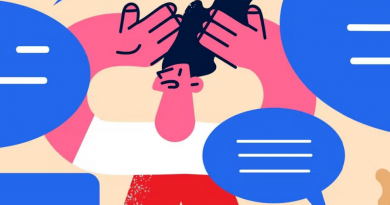6 ways to choose the best digital resources
Teachers understand how important it is to use high-quality educational tools and digital resources in the classroom, and they know it’s important to help students select books that match their needs and interests.
However, students today are learning from an expanded array of digital content, both at home and at school. This means teachers and parents have shared responsibility for teaching students a new set of skills for selecting media.
The six steps below will help teachers and parents discover high-quality media and learn what to look for and discuss with their students. Teachers should follow their local software approval process but can reinforce the skills and ideas below.
Step 1: Make a list of the specific digital resources your children use or would like to use.
Step 2: Use reviews to learn about the digital resources your child wants to use. The following two sites provide information about what’s in a game, app, movie, or online service. This helps parents make informed decisions about the media used by their children:
• Common Sense Media Reviews provide help with finding age-appropriate apps, games, movies, music, and TV shows. They also provide information parents need to know.
• Entertainment Software Ratings Board Reviews provide a rating and what’s in the game or app.
Step 3: Consider the following questions to inform your decision and what you need to talk about with your children.
What is the educational value of the app, media, game, or service? Talk with children about…
• where they can go to find age-appropriate apps, games, movies, etc.
Can your child communicate with people they don’t know while using the app, game, or service? Talk with children about…
• what personal information is OK to share and with whom?
• whether it’s OK to share photos/videos and when does a photo or video cross the line into inappropriate?
• what they can do if they receive communications that make them feel uncomfortable or scared.
• your expectations for how to treat people when communicating online.
• what to do if someone they are communicating with is in trouble or needs help
Is the app, game, media, or service age-appropriate and is there questionable content? Talk with children about…
• why using the content or online services that are not age-appropriate may be unhealthy or unsafe.
• real-life vs. dramatization.
• adult content vs. kid content.
Does the tool or service use location services? Talk with children about…
• whether you expect location services to be on or off and why.
• the benefits and potential dangers of leaving location services turned on. Some services make it visible for others to see where they are.
Can your child buy additional features, also known as in-app purchases? Talk with children about…
• whether they can purchase additional features and if so, what process you expect them to follow.
• whether they should ask permission before making a purchase?
• whether you will preload money into the accounts for them to use?
• how to keep track of how much money they are spending. Make it visible so they learn money management.
• how companies use what the buy and click on to advertise to them.
Can they publish text, photos, or videos publicly? Talk with children about…
• the value of their digital footprint and how to cultivate a positive one that will help their current and future opportunities.
• who looks at digital footprints (colleges, future employers, friends, family, community members)?
• what is helpful to publish and what might be harmful to publish.
Is there live streaming? Talk with children about…
• the importance of self-regulation. Explain why it is important to consider the immediate and future consequences of lifestreaming their experiences.
• your family’s values and when/where and what content is OK to live stream or whether you permit it at all.
What information is collected about your child and who can they share it with? This information is usually found in the Terms of Service and Privacy Policies. Talk with children about…
• the information the app, game, or service is collecting about them and why it matters
• when to say not to an app, game, or service that collects or shares too much information.
Who owns the content your child posts or shares? Talk with children about…
• copyright and their rights and responsibilities as consumers and creators of online content.
• Creative Commons licensing and how they can decide how their original works can be used by others.
Does the app, game, media, or service reflect your family’s values? Talk with children about…
• why the app, game, media, or online services is or isn’t in alignment with your family’s values.
Step 4: OK, you’ve done your research! Next, decide if the app, game, or media is right for your family or your classroom. Does your child have the maturity, judgment, and self-control to use it in a safe, responsible, and ethical manner?
Step 5: Establish expectations and consequences for not following the agreed-upon rules. Parents should be transparent about any parental controls you are using and why. Be consistent in upholding the expectations and consequences of not using digital resources appropriately. Fairfax County Public Schools in Virginia provides guidance and resources for establishing expectations.
Step 6: Enjoy media and digital resources together. Look for teachable moments to help children develop a safe and healthy relationship with their media and devices.
Source: https://www.eschoolnews.com/2020/05/19/6-ways-to-choose-the-best-digital-resources/?all




